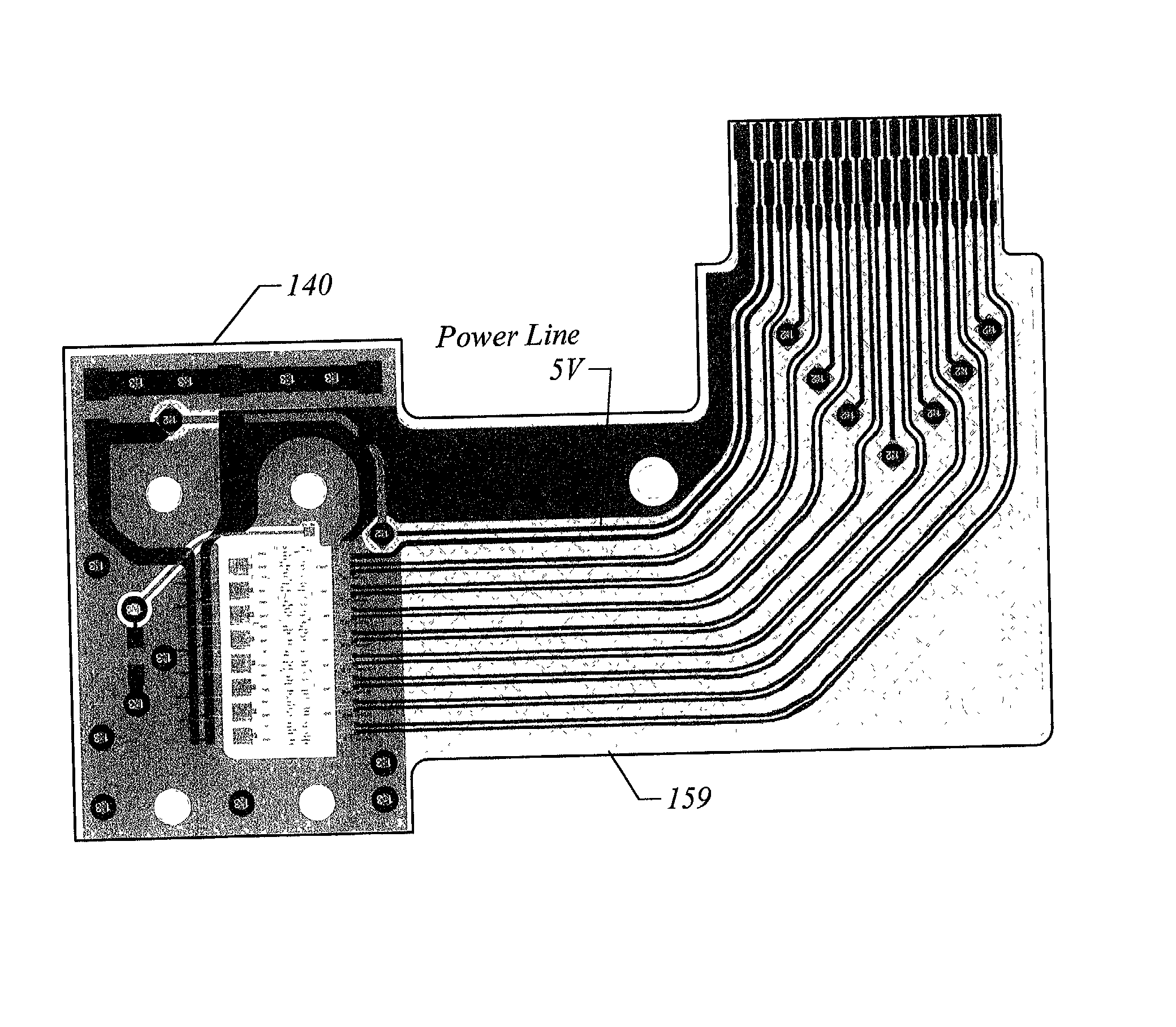Optical converter flex assemblies
a technology of optical converters and assemblies, applied in the direction of optical elements, instruments, high frequency circuit adaptations, etc., can solve the problems of more sensitive to optical misalignment, and achieve the effects of less rigidity, minimal loss, and increased flexibility
- Summary
- Abstract
- Description
- Claims
- Application Information
AI Technical Summary
Benefits of technology
Problems solved by technology
Method used
Image
Examples
Embodiment Construction
[0048] An aspect of the present invention achieves good long-term optical alignment by providing mechanical isolation of a ceramic substrate relative to the optical components such as lenses. This is accomplished by rigidly attaching the plastic optical portion of the conversion assemblies directly to a housing. Examples of wavelength division multiplexers and / or demultiplexers that may be housed in the plastic optical portion are described in the parent application and in commonly owned U.S. Pat. No. 6,201,908, titled "Optical Wavelength Division Multiplexer / Demultiplexer Having Preformed Passively Aligned Optics," incorporated herein by reference. The ceramic with its associated circuitry is also rigidly attached to the plastic optic. Electrical transmission line connections to and from the optical conversion circuits on the ceramic substrates are made via flexible circuit board designs. This flexible transmission line connection prevents any forces from acting on the ceramic and ...
PUM
 Login to View More
Login to View More Abstract
Description
Claims
Application Information
 Login to View More
Login to View More - R&D
- Intellectual Property
- Life Sciences
- Materials
- Tech Scout
- Unparalleled Data Quality
- Higher Quality Content
- 60% Fewer Hallucinations
Browse by: Latest US Patents, China's latest patents, Technical Efficacy Thesaurus, Application Domain, Technology Topic, Popular Technical Reports.
© 2025 PatSnap. All rights reserved.Legal|Privacy policy|Modern Slavery Act Transparency Statement|Sitemap|About US| Contact US: help@patsnap.com



